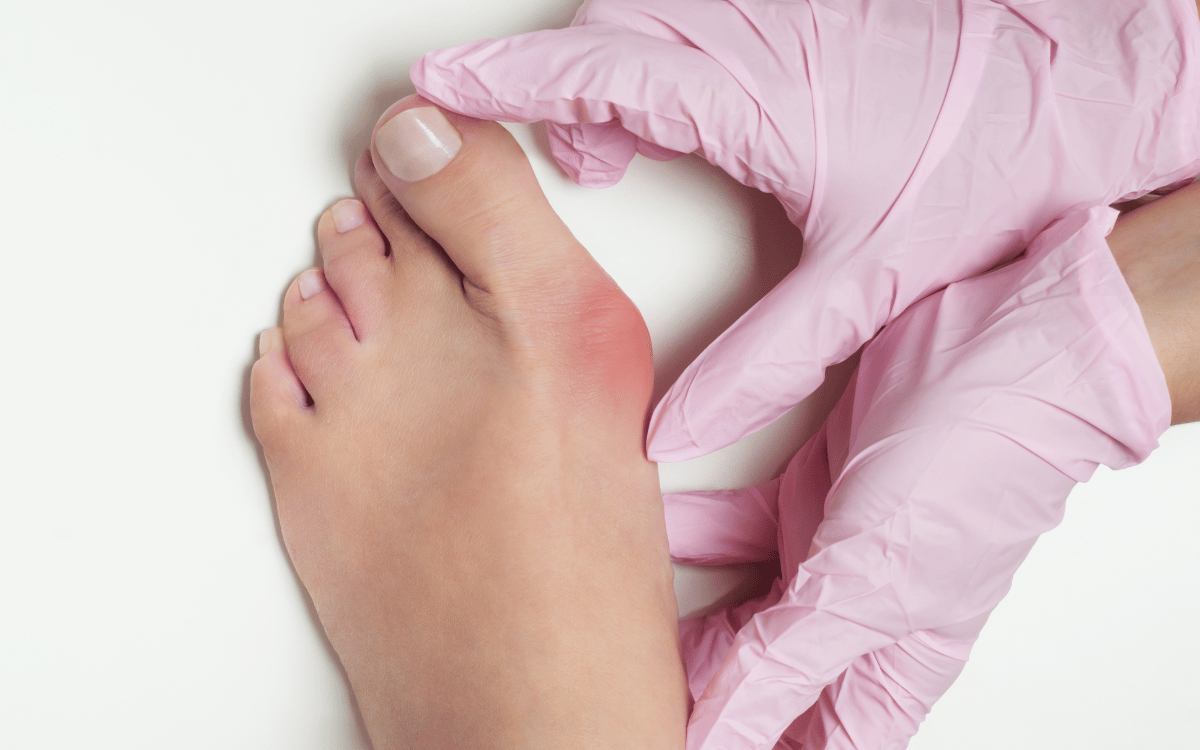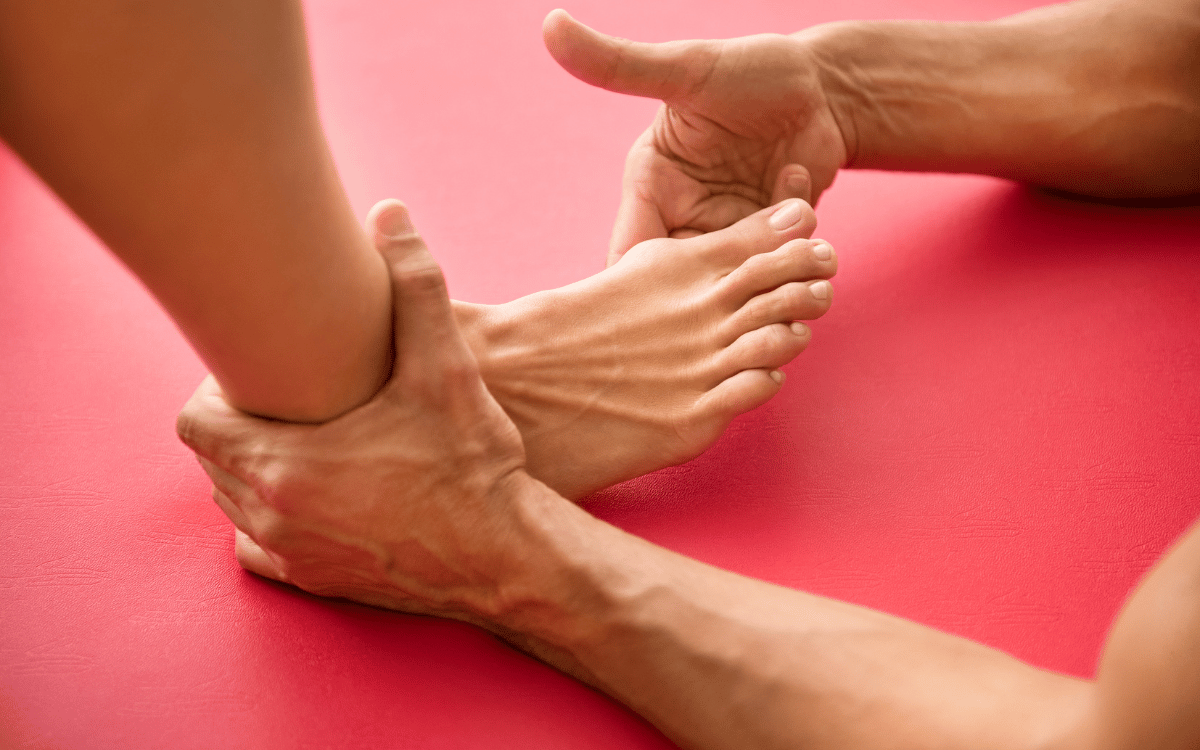As a podiatrist, my basic rule is, ‘if it hurts, don’t do it.’ Even if everything feels good and you are not experiencing foot pain or heel pain, you need to be careful. Low impact activities are great for avoiding foot pain and heel pain, and so from a podiatry sense these are perfect exercises. Take a structured approach, starting with a mild form of interval training.

Step 1: Warm up stretches
Warming up and—more importantly—warming down is vital to maintaining healthy feet and lower limbs. Try these podiatrist recommended stretches for lower limb flexibility, including your feet:
- Gluts: Lie on your back and bring one leg up to your chest with your hands over your knee. You will feel the stretch in the buttock and rear of your thigh. Hold for 30 seconds; perform 2 times each side.
- Hamstrings: Find a step about knee height, like a bench. Lift one leg up on the step, straight, with the heel resting on the surface. Keep your leg on the ground slightly bent and back straight. Lean forward, bending from your hips, and feel the stretch in your hamstrings. Hold for 30 seconds; perform 2 times each side.
- Hip Flexors: Placing one knee on the ground under you, step the opposite leg out in front so your thigh is perpendicular to the ground and knee is at a right angle. With hips straight lean toward the front leg so it becomes an acute angle. You will feel the stretch in the front thigh and hip. Hold for 90 seconds. Perform 2 times each side.
- Calf Extension: Stand with one foot in front of the other, about 50cm apart from toe to heel. Lean forward, keeping feet flat, so that you feel a stretch in the back calf and leg. Hold for 30 seconds; perform 2 times each side.
Step 2: Warm up walk
Take a brisk light walk for ten minutes, building up to a jog. Now start your intervals.
Step 3: Interval training
Interval training keeps your body in good form when running or walking, and as your podiatry I recommend them.
Week 1–6: Start 1 minute of running at 80% then drop down to 40% or walking for 2 minutes. You get a great cardiovascular workout without losing form, so you avoid foot pain. Interval training burns more calories and increases fitness levels much quicker than one steady pace.
Repeat this cycle for no more than 20 minutes. Start this 3 x weekly to begin with and slowly progress to every second day. Remain on this intensity for 4–6 weeks.
Week 7: Step up the pace to 1 minute on/1 minute off at a similar intensity for 20 minutes. You will be surprised how hard this is if you do it properly. Be careful. The most common reason for foot pain, heel pain and leg injury is exercising too hard too quickly—take it slowly.
After the interval warm down for five minutes and perform all of the above stretches again.
Low Impact Alternatives
In podiatry we aim to minimise foot pain, heel pain and leg injury. Low Impact exercise is a preferable option from a long-term podiatry and joint health perspective.
Active sports, such as running, can cause foot pain and place undue stress on lower limb joints. In podiatry, we know a limited amount of impact is actually good for your joints. But the aim is to find aerobic exercises that trim and firm up areas you want to work on without excessive impact.
Exercise 1: Walking
Walking is a great way to lose weight, stay in shape, and maintain your health. Think walking can’t be high intensity? Try upping your heart rate by walking faster, including hill and stair climbs and engaging your arms as you walk. Walking tones your legs, so you benefit there too.
Exercise 2: Swimming
Swimming is great for toning and you won’t impact any major muscle group. Mix up your strokes to gain an allover fitness workout, and use a kickboard to get your lower muscle groups working. Think of the added mental benefits of not being bothered by an SMS, phone call or incoming email while you are focused in the pool!
Exercise 3: Yoga
As a podiatrist, I recommend yoga, as it is an entire body and mind workout that combines stretching and toning into one activity. Only take up positions that suit your limits. Find the yoga style that suits you best – not all are insanely hot and some styles focus on stretching, like Vinyasa, and others on high intensity strength and toning, like Ashtanga.
Exercise 4: Pilates
Pilates is great for building core strength, long lean muscles, and improving your coordination. There is also a much lower rate of leg injury with greater core strength development.
Diet
Backup your exercise regime with a sensible diet that will keep off the kilos while providing plenty of protein for efficient muscle toning and development.
Get out there and exercise safely this summer. Call our podiatry clinic now – we’re here to bring you back to health, and maintain healthy feet and legs.



